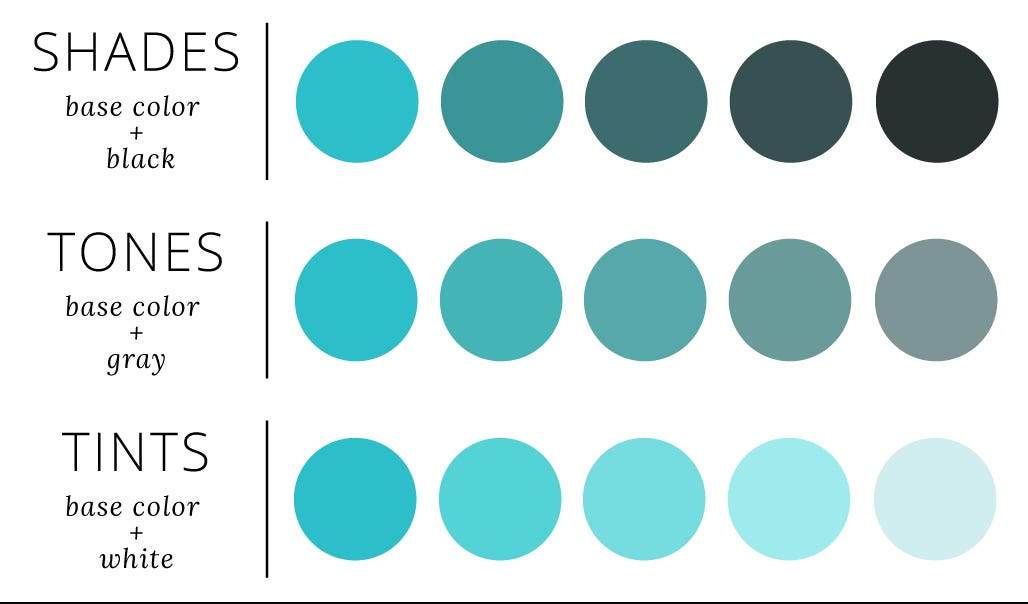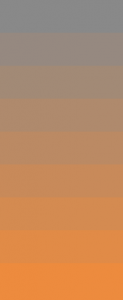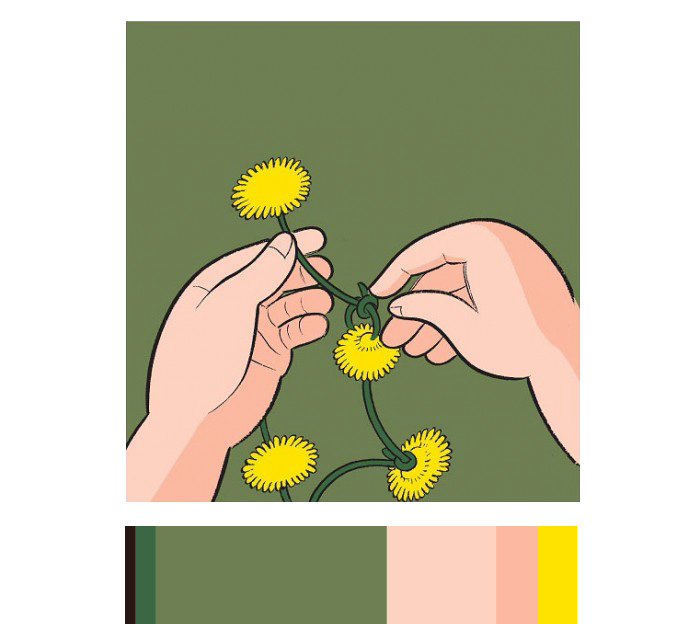December 10, 2018
What’s due?
Materials Needed:
- Your Glossument
Critique
- Present your Project #5 Freestudy with your partner for critique.
Discussion (15 min)
Color Harmony:
A palette of hues, shades, tints or tones is used to produce pleasing color relationships to engage the viewer and it create a sense of order in the visual experience. Successful, harmonious use of color creates dynamic equilibrium and helps to unify a composition.
For our final project (Project #6) we will look at formulas for creating harmonious color palettes and create a proportional color inventory as inspiration for our Glossument book covers.
Color Progressions
- Grayscale: progression from black to white in the absence of hue
- Shade Progression: progression of a hue produced by the addition of black
- Tint Progression: progression of a hue produced by the addition of white
- Tone Progression: progression of a hue produced by the addition of gray
- Complement Progression: progression of a hue produced by the addition of its complement
- Gradient: A gradient or graduated fill used in a digital application is a color fill that gradually blends from one color to another.
- grayscale
- tint progression
- shade progression
- tone progression
- complement progressions
- gradient in Illustrator- bittbox.com
- Shade Progression (black to red)
- Shade progression (black to violet)
- Two-color progression (orange to yellow)
- Two-color Progression
- Tint Progression (Blue to White)
- Tint Progression (white to green)
Color Relationships
- Monochromatic: colors that are shade or tint variations of the same hue.
- Analogous: colors that are adjacent to each other on the color wheel (example: violet, blue-violet, red-violet). They have the shortest interval and the most harmonious relationship because three or four neighboring hues always contain a common color that dominates the group.
- Complementary: using colors opposite on the color wheel. This relationship often produces visual tension, shock, or electricity (as we observed in our color interaction studies). This is often the least harmonious color relationship. A palette using complements should be “harmonized” with variations in value and saturation. (example: red and green when reduced to chromatic grays soften the effect of simultaneous contrast).
- Near-Complements: using a color and the color adjacent to its complement. This relationship softens the visual tension produced by using straight complements. (example: red and yellow-green)
- Split-Complements: based on the triad system, using one color plus two colors on either side of its complement. (example: orange and blue-violet & blue-green). This color scheme adds more variety and an opportunity for a specific accent or focus, if used in unequal proportions.
References:
- Adobe’s Color: http://color.adobe.com
- Adobe’s Color App for iPhone or iPad
- IPad app: Blendoku
Color Proportion/Hierarchy/Dominance
In a composition you may wish to have certain colors that are harmonious and share visual qualities (similar value, hue, saturation), and others may need to assert their independence and stand out. These would have less in common with the other colors in the palette (different in hue, saturation and/or value) and would create an accent or focal point. It’s important, when choosing a color scheme to resist the temptation to use all colors in equal volume. Unequal proportions are more interesting and aesthetically pleasing.
- Dominant color: color with the largest proportional area – often the ground.
- Sub-Dominant color(s): colors with less proportional area- they are often analogous colors or variants in tint or shade of the dominant color.
- Accent color: colors with a small proportional area, but offer contrast due to variation in saturation, value or hue.
LAB
- Complete Project #6: Discover.
- And review Project #6 : Define. Make sure you understand the guidelines before you leave!
Meetings:
- If you are not up to date with your work, have an INC grade for any project, or are missing any Phase #4: Deliver posts, please meet with the professor to review your grades.
- It’s up to you to make sure you have completed all the required work for the course.
Homework
- Complete Project #6: Phase 1: Discover
- Complete Project #6: Phase 2: Define
- No class on Thursday. Come prepared to present Project #6: Phase 1 and Phase 2 in class on Monday.
- Bring your Glossument. We will work in class to finish the Glossument Project + Project #6: Phase 3: Develop














